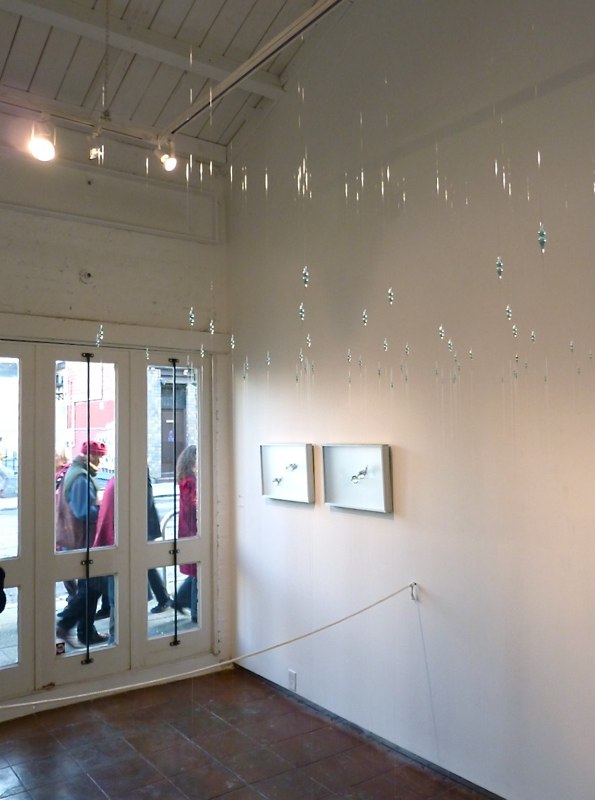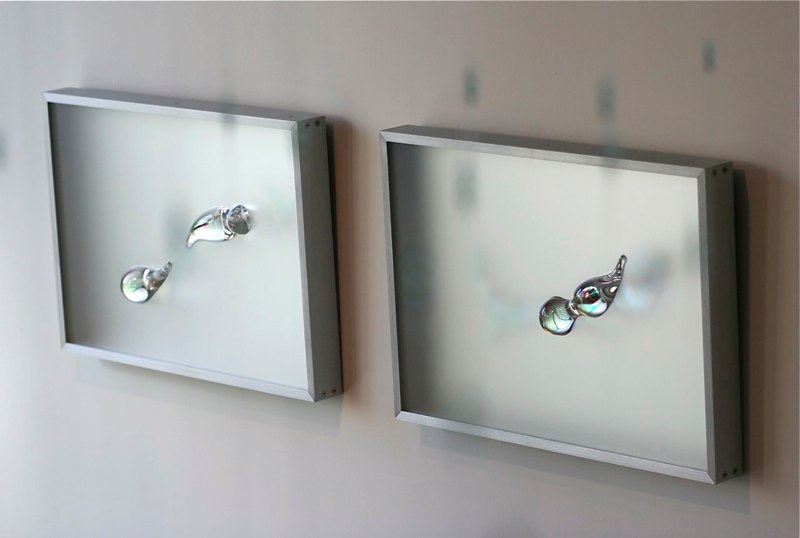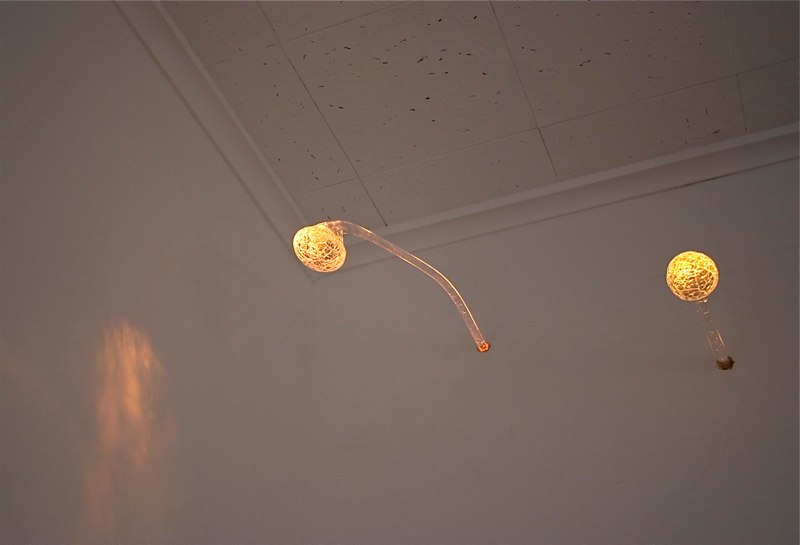KAGAMI 鏡: Kana Tanaka
APRIL 2ND-MAY 15TH, 2010
Kana Tanaka Mirror Surface, 2010, glass, dimensions variable
KAGAMI (“mirror” in Japanese) includes an extensive range of Tanaka’s beautifully executed glass-based artworks. Tanaka’s works draw attention to the nature of light, glass and the interplay between them, as well as to our own perception of light’s dynamic presence and effects. Mirror Surface and Morning Dew are site-specific installations comprised of numerous suspended glass droplets or spheres.They represent one of the unique directions this innovative artist has explored and for which she has become recognized over the past decade. In these mesmerizing works, she uses glass in unlikely and sometimes seemingly impossible ways, such as mimicking raindrops or filament.
Winter Night Sky is comprised of simple materials with a magical result. Glass fragments on a sheet of mirror are arranged and lit in such a way that a mirage-like image of an angelic figure appears on the walls of an otherwise dimly lit space. In smaller wall- mounted sculptures Aqueous and Petal Stream,Tanaka isolates sculpted glass forms within rectangular Plexiglas and mirror panels. Even these discrete objects encourage the viewer’s physical interactivity by offering changing reflections from various perspectives.
In addition to presenting these studio explorations, images and models of Tanaka’s large- scale public art projects will be on view.The Spirit of Camelback was commissioned for the Scottsdale Center for the Performing Arts in Scottsdale,AZ.This glass and fiber optics wall installation inspired by the region’s topography, extends from the building interior to exterior, creating an intriguing constellation-like element at the entry. Optical Streams Part 1 & 2 is installed on the children’s activity deck at the Lafayette, CA Library and Learning Center. In this outdoor project,Tanaka incorporated dichroic glass disks suspended overhead that cast colored shadow patterns on the deck below and portholes in which glass optical lenses invite children to examine the distorted reflections of their surroundings and themselves. These are just two examples of Tanaka’s unusual ability to translate fascinating discoveries of the controlled studio/ gallery environment into the public realm.


























